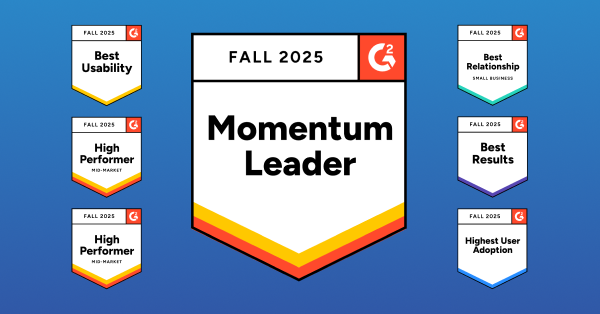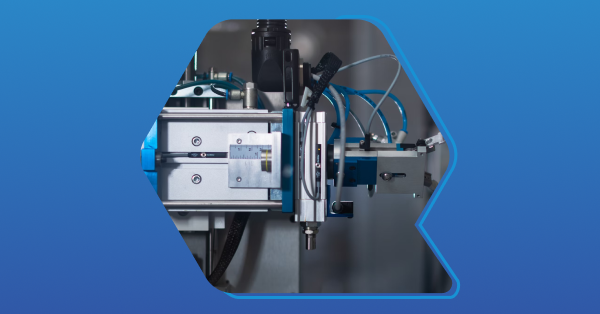The Top 8 LabVantage Alternatives

Looking to switch from LabVantage to a more modern, flexible, and budget-friendly LIMS?
Whether you’re limited by LabVantage’s customization options or conscious of price, there are several reasons to seek an alternative. To create this guide, we read reviews, gathered customer insights, and compiled pricing information to help you choose the best LIMS for your lab.
Why Look for an Alternative to LabVantage?
LabVantage was founded in 1981, when most labs were still using paper or building their own systems. Despite that long history, LabVantage may not be for everyone.
It’s clear from the 3.8 average on G2 that users have mixed reviews; they praise the platform for its flexibility and cross-functional support, but there’s also a fair amount that users aren’t thrilled with. For example, users in a Reddit thread cite the following limitations:
- Inability to adapt to their needs, whether that’s changing tests or report formats.
- Inflexible when it comes to generating different test sheets at scale.
- A steep learning curve and a lack of support and resources to overcome it.
One customer even moved back from LabVantage to Excel:
“I work at an enterprise chemical company that was using LabVantage... we ended up going back to Excel due to the antiquated UI/UX and overall headache of connecting and troubleshooting integrations between the equipment and other data systems we use.”
And this, despite having a 30+ year head start on many other LIMS platforms.
While LabVantage pricing is not publicly available, evidence suggests that it is a $ 100,000+ per year investment, depending on the client.
The pricing that can be found is part of the GSA Advantage program (typically the lowest price available and exclusive to government contracts). These prices are unlikely to be available to businesses, but they can help a lab building a vendor short list understand the price range they might encounter. Perpetual license GSA Advantage price data from 2020 lists $4239.29/user + 15% support with a $635.89/user/year maintenance fee for patches, updates/upgrades after the first 90 days. Add on additional costs for hardware and IT staff if you choose on-premises deployment.
That’s a mouthful. To make it simpler, here’s the point: legacy LIMS can end up being more expensive and complicated than their modern, cloud-based counterparts. Next, we’ll share the top LIMS to choose from.
The 8 Best LabVantage Alternatives
To save you time in your search, here are the top LIMS that we found.
- QBench
- LabWare
- Genemod
- Scisure
- Benchling
- CloudLIMS
- Lockbox LIMS
- Labguru
We ranked these based on the following:
- Their G2 rankings and reviews
- Their feature set and how well-suited they are to the needs of modern labs
- Their flexibility and adaptability
- Their implementation timeframe
1. QBench
QBench is an excellent choice for high-throughput labs looking to automate as much as possible, move fast, and stay compliant.
Many LIMS boast about flexibility and may even use “no-code” in their marketing materials. In reality, these LIMS are just as rigid and complex as their legacy counterparts.
Unlike these other LIMS, QBench means it. With QBench, you don’t need coding knowledge or expensive development contracts for the simplest changes. Simply log in and configure a test workflow, generate reports in bulk, and automate processes yourself.
QBench also stands in contrast to many legacy LIMS (which release updates annually, if at all) by releasing updates every three weeks. As of publishing this in October 2025, our latest release included:
- Data collision detection
- Permissions for equipment in our built-in QMS
- Field screens for customer-specific fields
You can see our entire backlog of releases here. We regularly source requests from our customers, giving labs a seat at the table and a voice in our product development process.
QBench has earned impressive recognition in 2025, ranking #1 on G2's Highest-Rated LIMS list, Easiest to Use LIMS list, and Highest-Rated LIMS in North America list. As a G2 Momentum Leader, QBench is on the move and outperforming many top competitors on the market.
And unlike some venture-backed LIMS with a mandate to move fast and cut costs (often breaking things in the process), QBench is privately owned by a group with over 30 years of hands-on lab experience. We know what labs need to succeed, and where they’ve been burned before by legacy software. Being privately owned gives us the freedom to make decisions based on the customer first, rather than the demands of a board or a pending IPO. QBench's employees are distributed globally to serve customers worldwide, with the majority of critical-role employees (88%) based in North America.
QBench offers multiple tiers, though its base tier packs a punch. QBench’s Starter tier includes access to workflow tools, reporting tools, no-code configurations, custom fields, user permissions, and more.
It’s no surprise that QBench leads several categories on G2, has 129 reviews (as of October 2025), and has earned 4.5/5 stars. No wonder second-time LIMS buyers consistently choose QBench after experiencing the limitations of legacy systems!
Price: Starts at $249/user/month with a discount for 20+ users
Notable features:
- Configurable automations
- Reports and data visualizations
- Inventory management
- Sample management
- Robust API support
- Billing and invoicing support
- WYSIWYG report template editor
- Integrated QMS
- BI integrations
Industries served:
- Materials & Manufacturing
- Food & Beverage
- Life Sciences
- Environmental
2. LabWare
LabWare is one of the legacy players on the market, having gotten its start in 1987.
Like LabVantage, LabWare is not a pure SaaS LIMS. LabWare excels at on-prem deployments with a self-hosted cloud or SaaS option. As a result, LabWare is best suited for larger companies with the budget for IT resources to manage self-hosted software.
LabWare boasts a number of automation capabilities along with QA/QC features and instrument integrations. LabWare is customizable and even has its own programming language called LIMS Basic. The latest version of LabWare, LabWare 8, was released on June 12, 2020.
LabWare is privately owned and has 40 offices around the world. Roughly 30% of its staff are in the EMEA region (Europe, the Middle East, & Africa), 29% in North America, 23% in South America, and 17% in Asia (according to LinkedIn). LabWare's reviews come from 62% of customers in North America, 19% in Europe, and 11% in Asia. LabWare has over 100 reviews on G2, with the majority of those coming from the pharmaceutical industry. They have an overall rating of 4.5/5 stars.
Price: No public pricing available, but it is likely to be priced for large enterprises (e.g. $100,000 per year or more). The pricing that can be found is part of the GSA Advantage program; perpetual license GSA Advantage price from 2021 is $7,043.22/user plus a 14% maintenance fee of $986.05/user/year for continued patches and product enhancements after year 1. There are also additional costs for access to technical support and for hardware and IT staff if you choose on-premises deployment.
Notable features:
- Automation capabilities
- QA/QC features
- Instrument integrations
- Sample management
- Reporting tools and data visualizations
Industries served:
- Biopharmaceutical
- Biotech
- Agriculture
3. Genemod
Genemod is a newer LIMS and ELN platform that focuses more on inventory management, freezer management, and electronic lab notebooks. They are a relatively small venture-backed team based in Seattle, Washington, with a few global team members.
Genemod offers a cloud-based solution and aims to be one of the simpler and more user-friendly options on the market. The most powerful features are gated behind the highest tiers, while the lowest tier is a better option for labs looking to start digitizing their inventory, rather than launching with a LIMS. While Genemod serves several industries, most of its marketing messaging is aimed at R&D and Biotech labs.
Price: Not available, but three tiers are listed on its website.
Notable features:
- Inventory management
- ELN
- Alerts
- Security
- Numerous integrations
- Reporting and visualizations
- AI-powered text generation for lab notebooks
Industries served:
- Biopharmaceutical
- Biotech
- Clinical research
- Gene therapy
- Genetics labs
- Academic Institutions
4. SciSure (formerly eLabNext)
SciSure (formerly eLab/eLabNext) is, like others on this list, an ELN + LIMS solution rather than a pure LIMS.
Its ELN product is well-featured, supporting documentation, collaboration, and version control, while its LIMS is more limited, focusing on sample management, inventory management, and equipment management.
SciSure offers simple workflow automation features, allowing you to create templates that standardize procedures in your lab. One unique aspect of Scisure is its marketplace, which offers add-ons to customize your platform according to your specific needs.
SciSure is the result of the merger between SciShield and eLabNext. eLabNext has been around for a bit (2010), while mainly being based in the United States. This merger is a step toward a global audience and significant expansion for the company.
Price: Not available.
Notable features:
- ELN
- Sample management
- Inventory management
- Equipment management
- Workflow automation
- Marketplace with addons to customize your platform
Industries served:
- Life sciences
- Biotech
- Academic Institutions
5. Benchling
Benchling is another popular LIMS platform, though, like others on this list, it is traditionally more of an ELN-forward product than a true LIMS. Benchling offers a suite of ELN and LIMS features, and is typically best suited for labs in the biotech and genomics industries.
Benchling is privately owned by 23 investors. Roughly 87% of its employees are based in North America, and 11% are in the EMEA region (according to LinkedIn). Benchling is well-reviewed on G2 with 4.5/5 stars. However, they haven't had a new review on G2 since January 2025.
Price: Last published on its website in 2020, pricing started at around $20,000/year for five users on the professional plan. It is believed the pricing has increased significantly since then.
Notable features:
- Centralize and standardize data
- Generate reports and visualizations
- Manage workflows
- Sample and inventory management
Industries served:
- Biopharmaceutical
- Biotech
- Agriculture
6. Lockbox LIMS
If your lab runs on Salesforce, then Lockbox LIMS (by Thirdwave Analytics) is a good option to consider.
Lockbox LIMS is a well-regarded player in the LIMS space, boasting a series of features that help labs digitize and automate their operations. Lockbox LIMS is built as a Salesforce app and is available on the Salesforce AppExchange. Lockbox’s marketing site claims it is best suited for Biotech, NGS, Core & QC Labs, so materials, manufacturing, and environmental labs may want to select a different LIMS on our list.
Lockbox LIMS is privately owned. Roughly 95% of its employees are located in North America and 5% in Europe (according to LinkedIn). Like many others on this list, Lockbox LIMS is well-rated on G2 with 4.9/5 stars.
Price: No public pricing available.
Notable features:
- Sample management
- Inventory management
- Integrations
- Instrument management
- Freezer management
- Customer portal
Industries served:
- Biobanking
- Biotech
- NGS Labs
- QC Labs
7. CloudLIMS
Like many on this list, CloudLIMS is a SaaS cloud-based LIMS that offers a wide variety of solutions to labs. CloudLIMS is specifically designed for biobanks and medical labs, with powerful features including a client portal, a patient and physician portal, and the ability to manage packages and shipments, along with other standard LIMS features like sample management, inventory management, and automation support.
Notably, CloudLIMS offers free onboarding and complimentary support in its plans, which may be appealing for budget-conscious labs. CloudLIMS has a solid 4.5 rating on G2, but has only 51 reviews.
Price: CloudLIMS offers a range of plans starting at $38/user/month up to $270/user/month based on needs and usage. They have separate tiers, though, for other industries, such as biobanks and Cannabis Labs. In all, CloudLIMS offers 17 pricing options.
Notable features:
- Inventory management
- Sample management
- Automations
- Patient/Physician portal
- Billing and invoicing support
- AI-powered text generation for lab notebooks
Industries served:
- Biobanking
- Cannabis
- Clinical diagnostics
- Clinical research
- Environmental
- Food and beverage
- Materials
- Oil and gas
- Psychedelics
- Veterinary
8. Labguru
Labguru is a great option for small labs looking to streamline and scale their operations with a focus on simplicity, ease of use, and user-friendliness.
It’s worth noting, though, that Labguru is primarily an ELN with LIMS features added on.
In the lab software industry, there are two categories of software you will encounter: a LIMS and an ELN. Some LIMS, like QBench, offer a full suite of lab management features, while others are more like digital versions of your physical lab records (learn more about the difference between a LIMS and ELN). Labguru leans more towards the ELN side of the lab software industry, as they are an ELN first and a LIMS second. While this approach works for some labs, those seeking a more mature platform that can automate tasks, manage data, and integrate instruments should opt for a fully featured LIMS.
Labguru recently rebranded to Cenovo and merged with Titian Software, which primarily serves large pharmaceutical labs. Given that, Labguru may be swayed from its current focus on mid-market and small labs. Previously, Labguru was owned by Holtzbrinck Publishing Group, a European publishing house. Labguru is now owned by Titian Software, a UK-based Sample Management business, which is itself owned by the private equity division of Battery Ventures. Roughly 43% of its staff are located in Europe and the Middle East, 30% in North America, and 28% in Asia.
Like QBench, Labguru is well-reviewed on G2 with 4.6/5 stars. 34% of its reviews are from customers in Europe, 32% from the Middle East, and 32% from North America (according to LinkedIn).
Price: Not available
Notable features:
- Built-in ELN
- Inventory management
- Reports and visualizations in premium tiers
- Automation in premium tiers
- API support in premium tiers
Industries served:
- Biotech
- Pharma
- Food and Beverage
- Molecular farming
- CRO/Service labs
- QC Labs
A Side-by-Side Look at These LabVantage Alternatives
We’ve covered a lot of ground so far, so a side-by-side comparison of these LabVantage alternatives may be beneficial as you make a decision on which LIMS is right for your lab.
One note on the pricing data: many LIMS providers gate pricing behind a demo, so there’s always a chance that the data we retrieved is outdated or does not reflect the pricing you would hear directly from the company, should you agree to a demo with them. We did our best to scour the internet, so (aside from the figures for QBench), please refer to these as a benchmark rather than exact figures.
Why Labs Look to QBench as the Best LabVantage Alternative
There are several reasons why QBench is a consistent leader across categories on G2, but they all boil down to a singular point: Labs can get more done with QBench LIMS.
While many legacy LIMS are complex and constraining, QBench frees up modern labs to focus more on science and less on managing clunky software. Specifically, labs love QBench for the following reasons:
- Configurable automations
- API support
- Ease of use and customer-centric approach
Configurable Automations
Automation is key for modern labs, and the lack of configurable automation is one of the top reasons modern labs switch off from LabVantage and other legacy LIMS.
Terms like “configurability” and “no-code” are becoming buzzwords in the LIMS industry, but for QBench, they are anything but. QBench takes a configurable approach to LIMS, which means you don’t need vast IT resources or expensive development contracts to adjust workflows or make simple changes.
With QBench’s workflow and automation tools, you can:
- Trigger processes for your lab.
- Easily update a process or roll out new processes.
- Save time by automating inventory stock.
- Run calculations, generate reports, and notify customers when results are ready.
- Set up workflows between various tools, including a client portal, billing, QuickBooks, inventory management, and quality management systems.
There is no need for complex development work or custom code; most legacy LIMS sell you the dream but deliver the nightmare. With QBench, you’ll need to pinch yourself after seeing what you can configure on your own.
RESTful API Support
The more connected your lab software and instruments are, the smoother the process will be as you scale. That’s why QBench offers a RESTful API that allows you to:
- Connect laboratory instruments with the LIMS for automatic integration and a comprehensive view of your data.
- Import or export data from external systems or to other systems. You can even use AI to make better decisions about your data.
- Generate custom reports from LIMS data by integrating with external reporting systems.
- Integrate LIMS data with a dashboard or visualization tool. This enables real-time monitoring of laboratory processes, providing valuable insights into lab performance.
We’ve heard horror stories from labs that worked with legacy LIMS systems that claimed to offer an API, but required spinning up a new endpoint for each new client. One lab made a change to their data model and had to wait nine months for that change to be accessible via API. In contrast, QBench’s API support adds to the flexibility of its LIMS, helping you get more done and achieve your laboratory objectives.
Ease of Use and Customer-Centric Approach
All of these powerful features are great, but if your LIMS isn’t easy to implement and use, they are all for naught. Fortunately, QBench consistently earns high marks for ease of use thanks to its:
- Modern, fast, user-friendly interface.
- Configurable and flexible workflows — if you can dream it, you can build it with QBench. More importantly, you can easily modify it over time yourself.
- Simple and automated data entry.
- A consultative and phased approach to implementation, helping you hit the ground running sooner than other LIMS.
Megan, of EO Science, says it best after choosing QBench over seven other LIMS:
“QBench is easy to use and understand, allowing Laboratory Management to configure almost everything with minimal support needed. It is highly configurable while not overwhelming. Implementation is much faster than other systems due to the ease of use and configuration. Plus, QBench is constantly enhancing the product with new features and providing easily accessible help tools.”
Any vendor can launch a flashy software product with a slick interface. QBench takes this one step further by taking care to partner with its customers, giving labs a powerful software platform with guidance and insights to put it to work. We regularly speak with our customers and integrate their feedback and feature requests into our product development process.
We believe in building a LIMS that empowers labs to get more done, and that starts with taking their needs and feedback seriously.
Looking for the Best LabVantage Alternative? Modern Labs Choose QBench
LabVantage may be one of the legacy platforms on the market, but that doesn’t make it the only option for your lab, or even the best.
Though the LIMS market is expanding each year, don’t get overwhelmed by the options when looking for the best replacement. If you are looking for a LIMS that provides:
- Robust integrations and API access
- Automation
- Reporting
- No-code configuration
- Ease of use
- Excellent support
- Customer-centricity
- Robust quality checking
- Competitive pricing
We suggest QBench: a LIMS that helps your lab work smarter with unparalleled flexibility to drive whatever the future brings.
Click the button below to schedule a demo and see for yourself.








